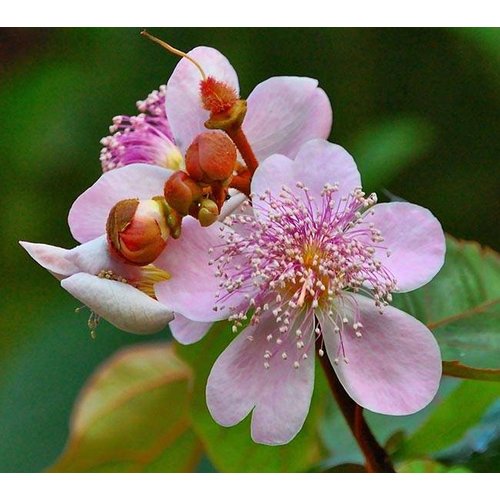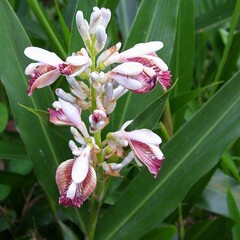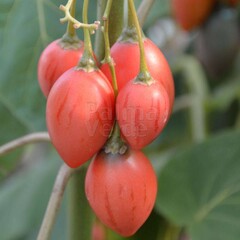Bixa orellana also called orlean tree or anatoboom. This tree is originated in the tropical, and subtropical areas of South America. However, it has spread throughout the world in tropical, and subtropical areas.
This plant is naturally up to 6 meters high. However, the Bixa orellana is also good to keep a cucumber and may be pruned. This very special plant blossoms in early summer with beautiful soft pink flowers.
These flowers have a diameter of about 5 cm and have 5 petals.
The stamens are dark red in color, which is beautifully colored on the soft pink.
The leaf is is up to 20 cm tall and heart-shaped.
In addition to the beautiful flowering, after the plant has flowed egg-shaped 4 cm long red hairy fruits.
In the fruits are red seeds covered with a blood red waxy layer. This waxy layer is used to obtain the red dye E160.
This natural dye is used in lipstick, soap and also in many foods.
Indians in the tropical rainforest use this dye to paint their skin.
As for the culinary applications of the seeds, these are used in Latin American, Jamaican and Filipino dishes.
The seeds have a subtle taste and aroma and color the food yellow to red / orange.
Is also widely used in rice instead of the much more expensive saffron. The Mexicans, for example, put their grilled meat in color with this colorant for the Chochinita Pibil.
The plant is likely to be in a sunny to half shaded place, in well-permeable potting soil.
The potting soil may be kept slightly moist during the summer.
In the spring of May to the end of September light fertilize every 3 weeks with some nutrition for flowering plants is sufficient.
If the plant overwinter over + 15ºC, for example in a conservatory or living room, it stays green and does not lose a leaf. The Bixa orellana is also held as a room plant. If the plant overwinters cooler, it loses its leaves. The plants supplied by us are in a cool environment in the winter and can not have any more leaves, after receipt it's better to overwinter in a cool room not near any heating.
In spring, new leaves will appear again as the weather gets hotter.
Winter hardness zone 11 (+ 10ºC).
























